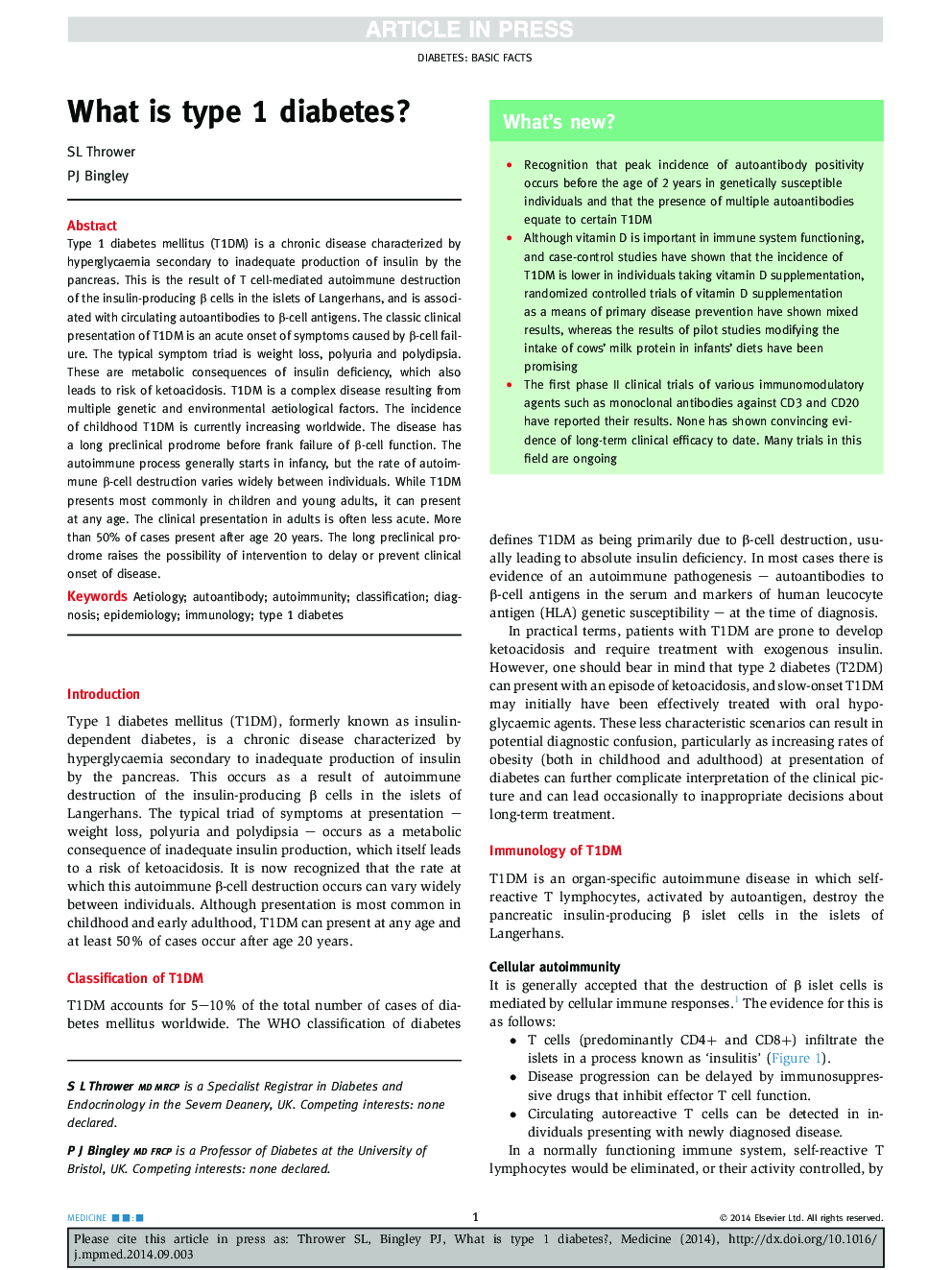| Article ID | Journal | Published Year | Pages | File Type |
|---|---|---|---|---|
| 6152008 | Medicine | 2014 | 6 Pages |
Abstract
Type 1 diabetes mellitus (T1DM) is a chronic disease characterized by hyperglycaemia secondary to inadequate production of insulin by the pancreas. This is the result of T cell-mediated autoimmune destruction of the insulin-producing β cells in the islets of Langerhans, and is associated with circulating autoantibodies to β-cell antigens. The classic clinical presentation of T1DM is an acute onset of symptoms caused by β-cell failure. The typical symptom triad is weight loss, polyuria and polydipsia. These are metabolic consequences of insulin deficiency, which also leads to risk of ketoacidosis. T1DM is a complex disease resulting from multiple genetic and environmental aetiological factors. The incidence of childhood T1DM is currently increasing worldwide. The disease has a long preclinical prodrome before frank failure of β-cell function. The autoimmune process generally starts in infancy, but the rate of autoimmune β-cell destruction varies widely between individuals. While T1DM presents most commonly in children and young adults, it can present at any age. The clinical presentation in adults is often less acute. More than 50% of cases present after age 20 years. The long preclinical prodrome raises the possibility of intervention to delay or prevent clinical onset of disease.
Keywords
Related Topics
Health Sciences
Medicine and Dentistry
Medicine and Dentistry (General)
Authors
S.L. Thrower, P.J. Bingley,
